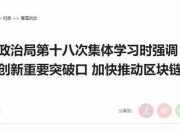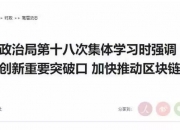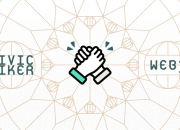我来简单概括一下《Web3.0体验营销方法论白皮书:营销数字化,从新一代营销理论创新开始》这篇报告的内容,以下是报告的一部分内容,更多内容请参考原报告。该报告主要分为用心四个部分。
Let me briefly summarize the content of the White Paper " Web3.0 Experiences with marketing methods: digitization of marketing, starting with a new generation of theoretical innovations in marketing ", which is part of the report. For more information, please refer to the original report. The report is divided into four main sections.
1.1 二十一世纪开始,世界经济模式开展转为体验经济
经济发展的演进已从过去的农业经济、工业经济、服务经济走向现阶段的体验经济(experience economy),而各经济发展阶段在生产行为及消费 行为上呈现不同的型态。
The evolution of economic development has moved from the past agro-economic, industrial, service economy to the current economic experience, with different patterns of production and consumption behaviour at various stages of economic development.

1.2 消费者购买行为主要有两大类型
1.2 Consumer purchasing has two main types of behaviour
体验经济时代,企业在生产行为及消费行为上更为注重满足不同消费行为的营销需求,因而衍生出了基于不同消费行为的营销理论。
During the economic era, businesses focused more on meeting the marketing needs of different consumption behaviours in terms of production behaviour and consumption behaviour, resulting in marketing theories based on different consumption behaviours.

2.1 全球互联网发展迈入Web3.0时代
Web3.0,新一代互联网将是信息聚联和用户价值共享的时代。
Web3.0, the new generation of the Internet will be an era of information networking and the sharing of user values.
2.2 数字技术的发展推动体验应用循环式升级
2.2 Development of digital technology promotes cyclical upgrading of applications
数字技术的发展与成熟推动体验模式升级, 从而形成基础设施-体验应用的迭代循。因此,需要建立满足沉浸体验的新营销理论体系以适应Web3体系下用户购买行为路径特征。、
The development and maturity of digital technology drives the upgrading of the experience model, thus creating an infrastructure-experimental continuum of applications. Thus, a new marketing theory system that meets the immersion experience needs to be developed to adapt to the user buying behaviour path characteristics of the Web3 system.
2.3 Web3体系下体验水平实现从被动式向主动式体验的跃迁
随着数字化水平的不断提高,企业可以实现消费者在过去不同购买行为路径环节的打通,实现覆盖完整购买行为路径的数据采集和分析,从而可 以实现购买行为路径分析,将其纳入全面体验营销核心坐标系中,推动全面体验营销理论向着四维体系进化。
As the level of digitalization increases, businesses can connect consumers to different purchasing behaviour paths in the past and achieve data collection and analysis that covers complete purchasing behaviour paths, so that purchasing behaviour path analysis can be achieved, integrated into the full-scale marketing core coordinates, and promote a full-scale experience of the evolution of marketing theory into a four-dimensional system.

3.1 当下,品牌主的营销数字化转型需求持续释放
运营、市场、销售等部门的数字化需求比例较高。
There is a high percentage of digital demand in sectors such as operations, markets, sales, etc.
数据类、营销类是软件厂商提供的热门产品类型,也是企业需求旺盛的领域。从厂商产品供给的前十五名热门产品类型来看,数据、营销、研发管理、物联网、安全、中台、OA等方向是当下的热门产品类型。
Data, marketing, etc. are the type of popular products offered by software manufacturers and are also an area of high demand by firms. Data, marketing, R & D management, material networking, safety, center stage, OA, etc. are the preferred type of products in the immediate future, as measured by the top 15 types of popular products supplied by manufacturers.
这说明,当下软件厂商在营销类和数据类的产品方面处于优选布局状态,该赛道厂商数量较多,竞争较为激烈。
& nbsp; this indicates that the current software manufacturer is in a privileged position of marketing and data-type products, with a larger number of trackers and more competitive ones.

3.2 未来,营销数字化将是企业数字化转型建设的重点场景
3.2 In the future, the digitalization of marketing will be the focus of business digital transformation
从品牌主对未来数字化重点场景的选择来看,财资类、HR类等职能场景的数字化并不是优选项,而数据、营销、销售、客服等营销场景才是数字 化重点场景。因此,未来数字化建设需求势必会围绕营销场景数字化为主,营销数字化需要加强与业务各环节的融合,建立全域营销体系。
In terms of brand owners’ choice of future digitized focus scenarios, digitization of functional settings such as finance, HR, etc., is not a preferred option, while marketing scenarios such as data, marketing, sales, and hospitality are digitized priority scenarios. Therefore, future digitized demand for digitized digitized – and digitized marketing needs to be better integrated with business linkages and a global marketing system.
4.1 体验营销理论需要进一步创新
4.1 Experience marketing theory needs further innovation
体验营销虽然是针对冲动性购买行为的营销理论,但其在制定营销策略时仍多为前置型营销策略,即在事前就把所有可能诱发消费者发生购买行 为的营销元素提前设定好,然后再进行推送和触达以激发消费者的冲动性购买行为。
While experiencing marketing theories that target impulsive purchasing behaviour, marketing strategies are often pre-emptive, i.e. pre-set all marketing elements that may induce consumers to buy in advance, followed by push and touch to stimulate consumer impulsive purchasing.
但是随着数字化水平的不断提高以及AI技术的成熟应用,企业已经可以建立实时的数据监测和内容创意制作能力,可以通过实时的触点设置来放 大诱导消费者产生冲动性购买行为的能力。因此,需要建立一套更强调实时性、智能化、数据化、内容化的事中型营销方法论。
& nbsp; but with increasing levels of digitalization and mature applications of AI technology, enterprises have been able to build real-time data monitoring and content creative production capabilities, which can be used in real-time tentacle settings to induce consumers to generate impulsive purchasing behaviour. Therefore, a set of medium-sized marketing approaches that place greater emphasis on real-time, intelligent, data-based, and content-based practices is needed.

4.2 元点体验营销方法论概述
4.2 Summary of meta-exercise marketing methodology
由消费者的购物过程可以分为四个阶段:分别为R 阶段,U阶段,圆A阶段和元点A阶段。 冲动性购买的发生正是处于消费者购买决策过程 中的元点A之处,是由于一些感性因素对购买行为 路径的触发导致这种购买行为的发生的。 针对这一元点A发生时所开展的营销策略,称之为 元点体验营销方法论。
The process of shopping by consumers can be divided into four stages: the R phase, the U phase, the Round A phase, and the meta-point A phase. Motivated purchases occur precisely where they occur in the consumer’s purchasing decision-making process.
(本文仅供参考,不代表我们的任何投资建议。如需使用相关信息,请参阅报告原文。)
(This document is for information purposes only and does not represent any of our investment proposals. For relevant information, please refer to the original version of the report.
注册有任何问题请添加 微信:MVIP619 拉你进入群

打开微信扫一扫
添加客服
进入交流群



















发表评论